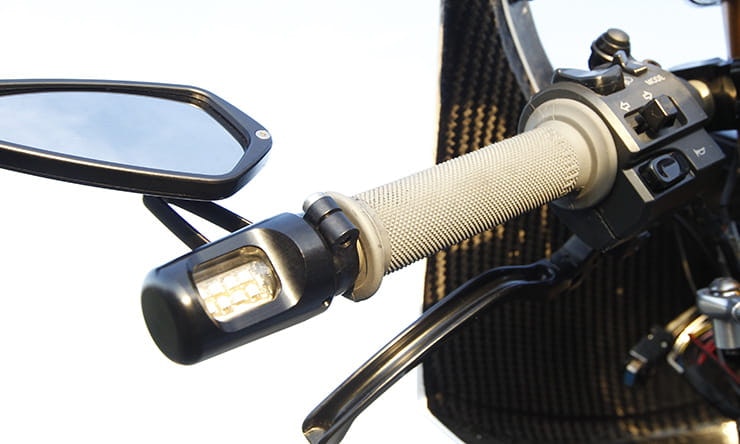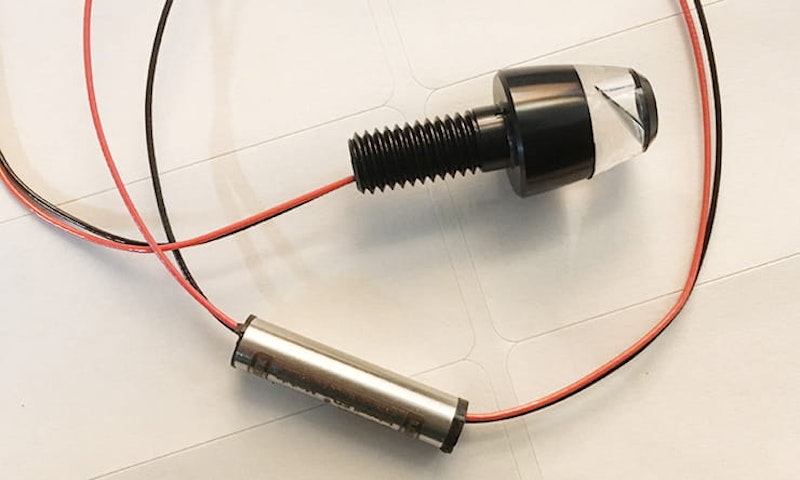Motorcycle electrics explained: LED Indicators
By Rupert Paul
Motorcycle Journalist
03.10.2017
Rupert Paul of Rupe’s Rewires has been designing and building custom wiring looms for six years. Here’s his take on what to look for when you buy aftermarket electrics…
Everyone wants LED indicators because they’re smaller than conventional ones, so come in a wider range of styles.
Almost all come with skinny cables and bullet connectors, so the usual rules apply about careful crimping and layout to avoid them breaking. You’ll often need to extend the cables, and add a protective PVC sleeve. If you do, stagger the soldered splices or the sleeve won’t go over the bulge.
Unlike normal indicators, LEDs (light emiting diodes) only work in one polarity. That’s what a diode is – a one-way gate for electricity, so you need to connect the positive feed to the correct cable. You also need an LED-compatible flasher unit. In fact, I suggest you need a three-pin LED flasher unit, as the two-pin version is power in from the battery, power out to the handlebar switch; the three-pin version includes an earth as well. Some indicators won’t work with a two-pin unit. I’ve also had a Koso speedo where the indicators worked, but the indicator warning light came on without flashing until I switched to a three-pin.
Get the connections right or you’ll cook the flasher unit – you’ll see the spades marked with letters; ‘L’ means wire to light, ‘B’ means wire to battery and the other one, sometimes marked ‘X’ is earth.
My least favourite indicator is Motogadget’s M Blaze, which comes with a dirty great cylinder of electro-gubbins half way along the cable – this means you can’t fit a protective PVC sleeve, so you have these delicate wires flapping in the breeze and you also need somewhere to mount the cylinders.
My favourites are these Shin Yo miniature indicators, which are about half the length of your middle finger. I’m not sure how visible they’d be in bright sunlight though…
Get more advice on all forms of motorcycle electrics by clicking here
Rupe’s Rewires
Meet Rupert Paul, BikeSocial’s electrics expert…
Share on social media:

